Understanding Pool Circulation System
Every pool owner wants their swimming water to stay clean and free from algae, scaling, and other problems. The secret lies in a well-functioning circulation system, which is the engine that keeps everything working together. Think of it like the circulatory system in the body—without proper functioning, the total balance is lost. The pump, the heart of this system, draws water through skimmers, drains, and outlets, ensuring debris is removed before it reaches the filter. Once filtered, treated, and heated, the water is returned through the returns, keeping the pool walls free of buildup. In simple words, “A pool circulation system filters and sanitizes water using a pump, filter, skimmer, and returns to maintain water clarity and hygiene.“
A major issue arises when any components fail. Failure to fix issues in time can lead to medical bills for swimmers, rising energy bills, and an increase in treatment costs. The right way to optimize this system is through regular DIY maintenance and knowing how this system works. A little effort in eradicating early signs of breaks prevents big regrets later. Understanding the important elements—like how pressure is generated as water moves through the impeller and how it is passed through a heater or chlorinator—helps owners stay in control. With precision, this process ensures the pool remains a happy and safe space for everyone, without unnecessary costs on your shoulders.
Components of a Pool Circulation System
A pool circulation system is like the heart of your pool, keeping the water moving to stay clean and safe. The main parts include the pump, which actively moves the water through the rest of the system. First, the skimmers and main drain pull in debris before sending it to the filter, which removes dirt and particles. If you have a heater or chemical feeder, they work here to adjust the water temperature and balance. The returns then push the clean water back into the pool, ensuring even flow. Any problems with these components can affect the whole system, causing you to notice less efficient water movement. This can lead to costly repairs or even expensive replacements. Ignoring breaks or malfunctions might result in dangerous conditions, potential damage, and a system that no longer works as it should. Keeping everything in order is key to avoiding unnecessary issues. If you’re experiencing pool deck cracks, it’s essential to address them early to prevent long-term damage.
1. Pool Pump
The pool pump is the heart of the circulation system, ensuring water passes efficiently through the plumbing system. It works by creating suction to pull water from the skimmers, main drains, and other outlets before pushing it through the pool filter and back into the pool. This continuous movement prevents stagnation and distributes chemicals evenly for effective sanitizing.
A well-maintained pump also ensures proper pool tile maintenance. Checking the pumping chamber for cracks or plugging, emptying the strainer basket, and inspecting the shaft seal are crucial tasks for keeping it in optimal shape.
In residential pools, the ideal runtime is 8-10 hours, and you can calculate the necessary size of your pump by determining the number of gallons it needs to circulate per hour. A good rule of thumb is to ensure the pump cycles all the water in the pool within this timeframe. Selecting the right pump depends on several factors, including whether the pump is located above or below the pool surface. A self-priming pump is capable of pulling water upwards, while others rely on gravity and must be filled with water before operation. Always inspect the pumping chamber and carefully check for cracks, damage, or plugging that could affect performance. The strainer basket must be emptied regularly to prevent clogging, and the hair and lint trap should be securely in place to catch debris before it reaches the impeller. Proper maintenance extends the pump’s lifespan. Always clean, lubricate, and replace the lid gasket and o-ring using non-petroleum lubricants like teflon or silicone to ensure a tight seal. The pump’s shaft seal should also be checked periodically, especially if the pump starts making unusual noises or if air is entering the suction pipe. If the pump stops unexpectedly, it may be due to air trapped inside, which can be remedied by closing the valve, turning off the pump, and restarting it after a few minutes.
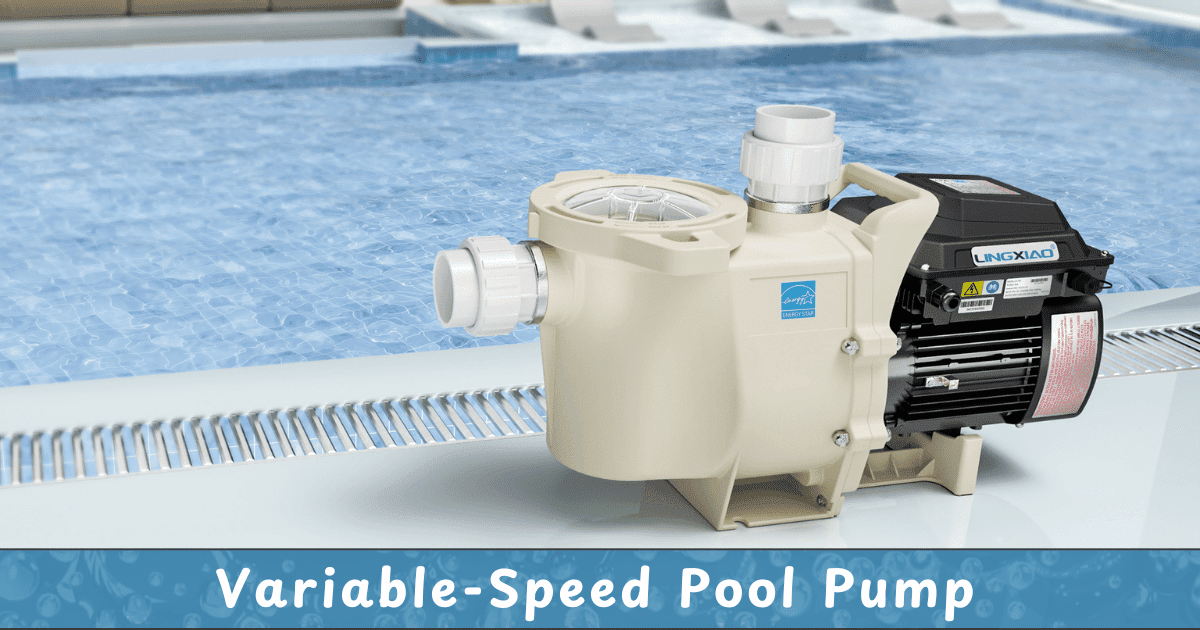
A pool pump plays a critical role in filtering dirt, particles, and debris from water before sending it to the pool filter, pool heater, and pool inlets. There are three types of filters available: Diatomaceous Earth (D.E.) Filters, Sand Filters, and Cartridge Filters. These filters capture microns of dirt and need routine maintenance, such as backwashing and replacing the filter when the gauge reads a high psi. For owners looking to save energy costs, variable-speed pumps are more efficient than single-speed models. These advanced pumps allow users to set programmable speeds for different tasks, such as running at high speed for backwashing and low speed for daily circulation. Some even have automation features that let you set timers to run the pump at different times of the day. This can lead to annual savings of up to 90% on energy costs. If an automatic pool cleaner is part of your system, a booster pump like a Polaris model may be needed. A dedicated line supplies pressurized water to the automatic cleaner, allowing it to move efficiently. However, the booster pump must not be turned on unless the pool circulation pump is already running, as it depends on water flow to function. Proper setup ensures the cleaner effectively removes bacteria, algae, and microbial contaminants, improving overall sanitation efficiency and creating a healthier swimming environment.
2. Filters
A pool filter plays a major role in keeping the water clean by removing dirt and particles that affect the functionality and cleanliness of the pool. It works together with the pump, which is the heart of the circulation system, pulling water through skimmers and main drains before sending it through the filter. The pumping chamber ensures that debris is collected and prevented from plugging the system. This process keeps the pool looking fresh and free from contaminants. Pool owners have three filtering options: Sand, Cartridge, and Diatomaceous Earth (D.E.) Filters. Each has its own method of capturing dirt down to tiny microns. Sand filters are backwashed when the gauge reads high psi, while Cartridge filters are cleaned manually and replaced every few years. D.E. Filters offer the finest filtration but require more maintenance. Choosing the right filter depends on factors like pumps per hour, gallons of water, proper adhesive and grout for tiling and the approximate size of the pool. A well-functioning plumbing system supports adequate circulation, preventing dead spots where bacteria and microbial growth occur. The filter must be inspected carefully for cracks or damage and should be replaced when necessary. If the suction or pressure side shows inefficiency, it could mean the impeller is clogged or the shaft seal is worn. Proper maintenance, including backwashing and keeping the strainer basket emptied regularly, helps to improve overall sanitation efficiency.
Another key element is prevention—ensuring the filter is never running without water. If the pump´s stopped and the suction pipe fills with air, it may fail to start pumping properly. This can be remedied by closing the correct valve and turning off the pump until it is primed again. A self-priming pump is capable of pulling water from a level below, while a not self-priming pump depends on gravity for the initial fill. Keeping the lid and o-ring properly lubricated with non-petroleum products like teflon or silicone ensures a securely placed seal. For advanced automation, filters can be integrated with programmable timers, running at different times of the day. When paired with an automatic pool cleaner, a booster pump like Polaris helps in moving debris away from the pool efficiently. The automatic cleaner is connected to a dedicated line and must not be turned on unless the pool circulation pump is running. This setup helps improve energy-efficient operation, leading to savings of up to 90% on annual costs.
3. Skimmers
Skimmers play a critical role in keeping your pool water clean by helping to circulate and filter out floating debris. These components are installed at the top of the pool wall and have a rectangular opening with a door or weir that adjusts based on the water level. As the pump creates suction, the skimmers collect and remove dirt, leaves, and other particles from the surface before they sink. This helps maintain consistent flow and prevent sucked air from entering the system, which can cause a loss in efficiency.
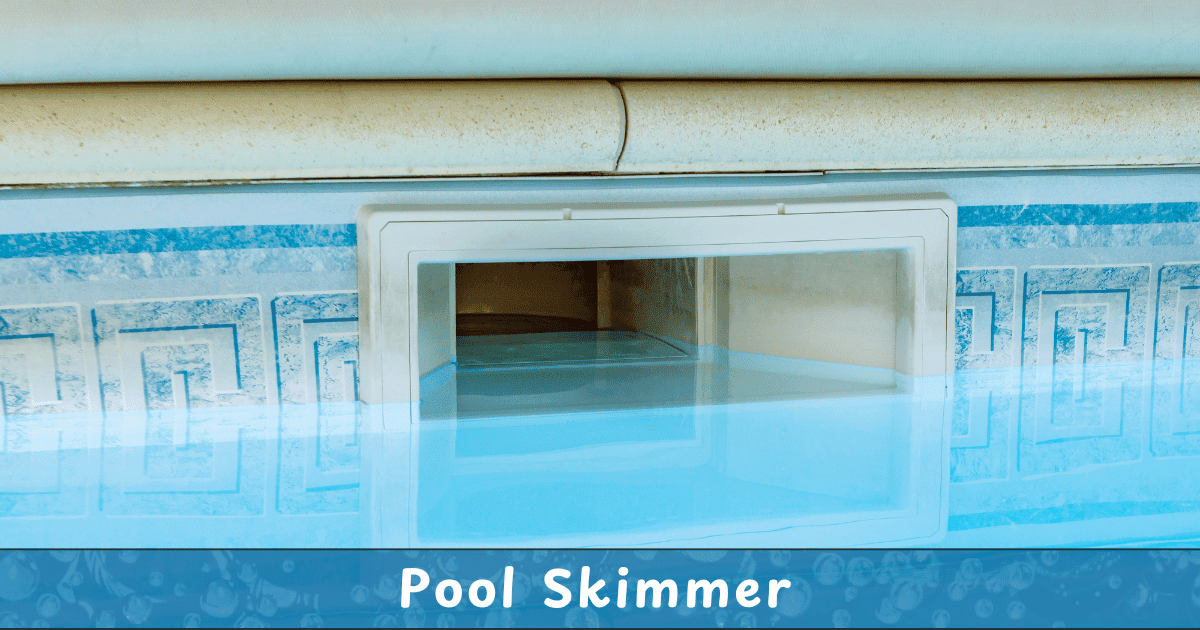
Inside, a basket is in place to catch large debris, avoiding potential clogs in the line. A flap in the throat of the skimmers stops the debris from floating back, maximizing the function of the system. Some models are equipped with a vacuum port, allowing you to increase suction and insure better cleaning. Regular maintenance is essential—the basket should be emptied regularly, at least once a week, to keep the skimmers functioning properly. A well-maintained circulation system ensures that water flows efficiently to the main drain, preventing pressure buildup and keeping your pool in peak operating condition.
4. Main Drain
The main drain is an essential outlet located at the deepest point of the pool, usually installed on the floor to aid in circulation. It works with the pump to draw water from the bottom, ensuring properly balanced filtration. Without it, debris at the deep end would remain stagnant. However, poorly maintained suction can be dangerous, as strong forces may pull in jewelry, hair, or body parts, posing a drowning risk. The Virginia Graeme Baker Act (VGB Act) of 2007 was passed after an unfortunate accident where Virginia, the granddaughter of former U.S. Secretary of State James Baker, lost her life due to a faulty drain. Her mother, Nancy, led tireless lobbying to mandate newly designed covers for public swimming pools, which are now required to prevent entrapment.
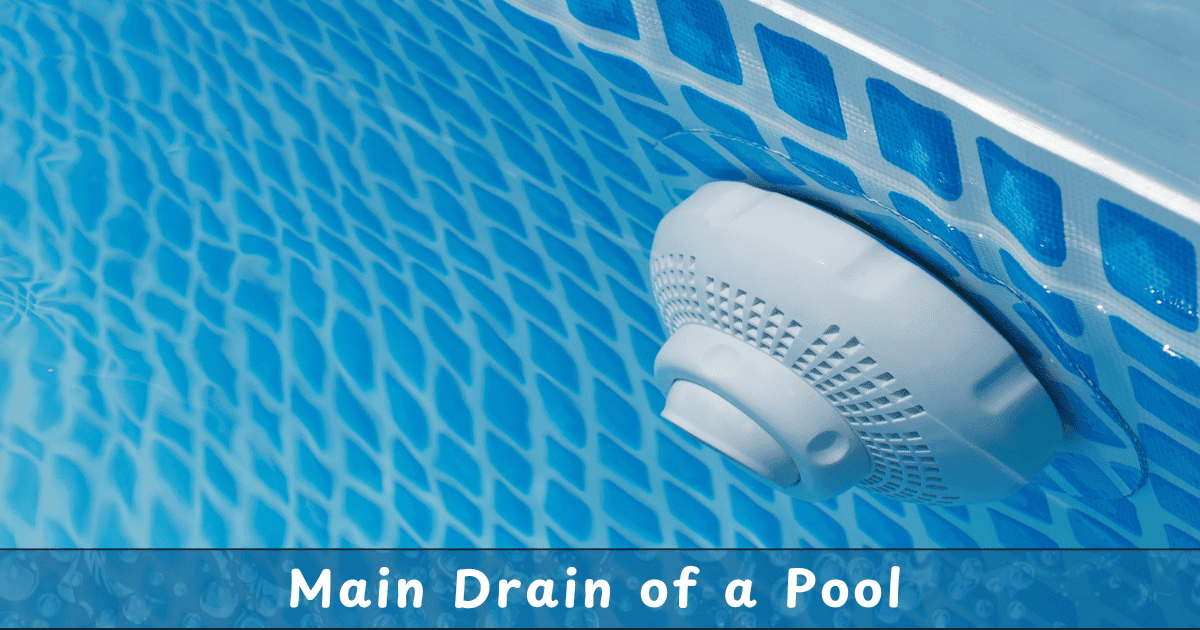
For private pools, it’s highly recommended to inspect and replace old covers with newer, compliant ones. Two circulation systems are often constructed in modern pools, reducing reliance on a single drain and adding various safeguards, like an emergency shut-off if pressure levels rise. This ensures that at least 1/3rd of the water is circulated through the bottom, improving overall flow and cleanliness. The primary purpose of the main drain is not just suction but to assist in circulating the water efficiently, preventing buildup at the deepest point. For residential pools, an extra drain at a lower level is ideal, reducing risks and enhancing filtration. Regular maintenance keeps the system sealed and functioning safely, ensuring no human becomes an unfortunate victim due to negligence.
5. Return Jets and Inlets
In every pool, the return jets play a key role in keeping the water moving. These small openings, typically 1 1/2″ in size, push the water back into the pool after it completes its journey through the circulation system. With adjustable eyeball fittings and threaded connections, they allow you to aim the flow in the right direction, ensuring no dead sections where debris or algae might settle. For instance, pointing the jets downward and in a clockwise spin helps to circulate the water effectively, especially in older pools with weaker movement. Positioning jets near ladders, steps, crevices, and cracks can increase their ability to carry away tiny dirt particles. A proper setup even helps loosen grime, making it easier to brush clean during weekly maintenance. If your pool has two or three returns, adjusting them carefully enhances the flow, reaching spots that are hard to clean. Since they are located at the last stage of circulation, keeping them clear is important for consistent performance.
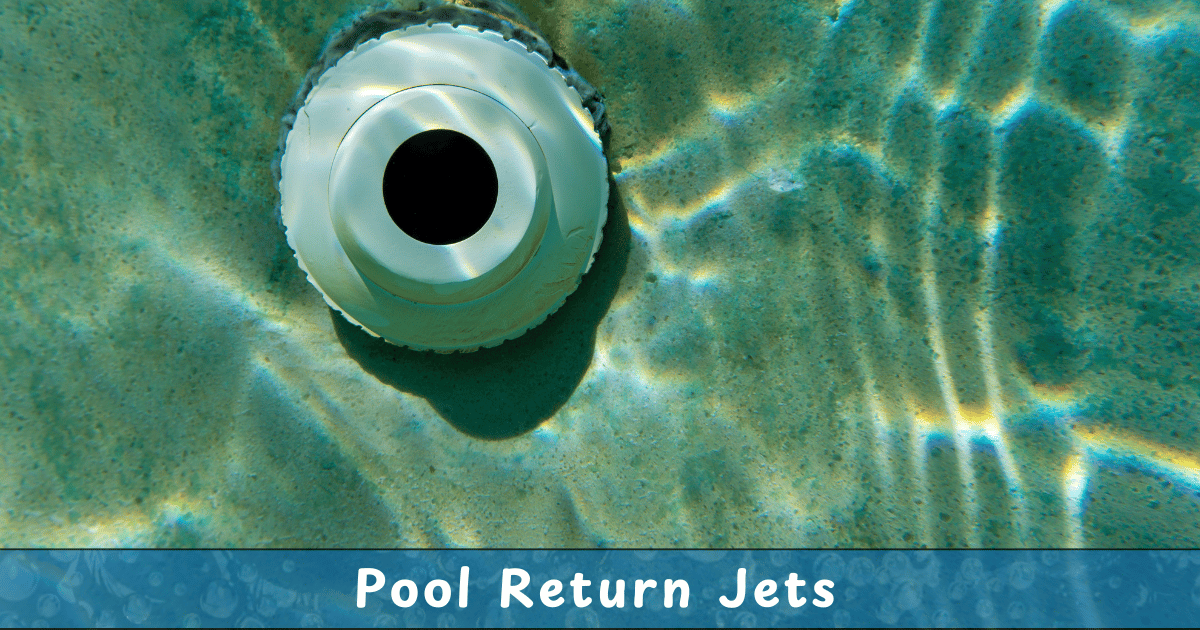
How Pool Circulation Works
A well-functioning pool circulation system keeps the water clean, balanced, and safe for swimming. The pump sucks water through the skimmer, a rectangular port on the wall that collects floating debris. Anything that passes through the skimmer moves to the strainer basket, catching large debris like leaves before the filter removes microscopic contaminants. Once filtered, the water is sent back through jets that push it at an angle to create a circular flow.
For proper pool maintenance, it’s important to vacuum your pool regularly and use the correct methods for blowing out pool lines.
Experts recommend positioning the jets to prevent dead areas where dirt can settle, such as behind ladders, steps, underneath ledges, and pockets with poorer circulation. Water should never sink into a hole or feel drop in movement, as that could lead to stagnation. A well-set system ensures no area is left overflowing with debris while another remains untouched. The process repeats a few times per day, keeping your pool fresh.
Pool Circulation System Diagram
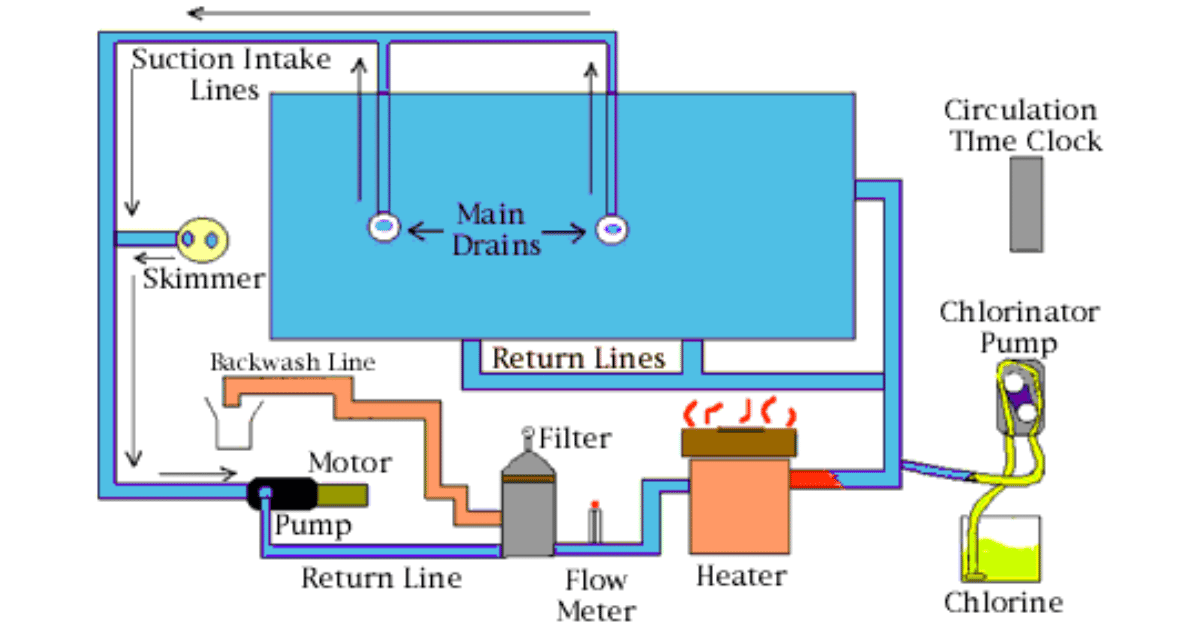
Pool Circulation vs. Filtration
Filtration refers to the removal of small particles from the water. Circulation is when the water is moved around the pool effectively, allowing the chemicals to reach the entire pool area. Good circulation in your pool means much more of the pool water reaches the filter. More than half the job of keeping a pool clear is handled by the mechanics of filtration and circulation. Therefore, the better the water is circulating, the better the filtration and the cleaner the pool.
How to Circulate Pool Water Without a Pump
Keeping your pool water moving is essential to prevent stagnation, debris buildup, and algae growth. But what if you need to circulate the water without a pump? While a filtration system is the best way to maintain clean water, there are several alternatives that can help enhance movement manually or with specialized devices.
One effective way to create movement is by using a manual stirring technique. You can use a brush, paddle, or even an oar to stir the water occasionally, especially when adding chemicals. This prevents debris buildup and keeps particles from settling. Additionally, a shop vacuum like the Stanley SL18116P Wet Dry Vacuum with 6-gallon capacity and 4-horsepower can be used to suck and remove water, allowing for a partial change that helps refresh stagnant areas. If you don’t own one, you can rent a powerful model for an effective cleaning session.
For a more hands-free approach, consider using a Dolphin Nautilus CC Plus robotic pool cleaner with smart navigation and wall climbing ability. This vacuum system features rotating brushes and sensors to detect large debris, ensuring a pristine environment. Similarly, the Betta 2 Solar-Powered Automatic Skimmer with Twin SCT motors efficiently collects surface debris using nets and vents, reducing stagnation. If you prefer a budget-friendly method, a skim net or a floating automatic pool skimmer can help remove floating particles.
Another trick is adjusting pool jets at a 45° downward angle to create a circular motion, which prevents stagnating water. If you don’t have working jets, you can mimic this phenomenon by using a garden hose or a gas siphon pump like the HORUSDY 6ft siphon with a 1/2 valve. The atmospheric pressure difference allows water to be transferred, while the manual movement of the hose helps push it along. These methods can conserve energy while keeping your pool water sparkling and preventing algae from thriving.
Additionally, keeping your pool clean without a filter is an essential skill for any pool owner.
The ‘Recirculate’ Setting on Pool Pumps
The recirculate setting on a pool pump is like a shortcut in your circulation system, helping avoid buildup in the plumbing when needed. Instead of sending water through the filter, it moves directly from the skimmer, through the pump, and back into the pool via the return jets. This bypass mode is useful when dealing with high debris loads, preventing clogs in the filter and saving you from headaches during maintenance.
Using the multiport valve, you can quickly switch to recirculate by clicking it into the right position. Some valves have a push-pull system, where you pull up or push down to shift modes. Others require twisting the handle into a perpendicular or parallel alignment. If the valve handles feel stuck or cracking, don’t force them—this could lead to damage in the system.
A pressure gauge acts as your referee when using the recirculate setting. If the PSI is climbing too fast, that’s a warning sign of trapped air or backup in the lines. Normal operation should show a lower pressure compared to filtration mode, with water flowing smoothly and bubbles visibly moving through the returns. If something seems wrong, it’s best to do some testing with strips to ensure your sanitizer is still properly distributed.
The recirculate function also plays a role in your seasonal playbook. During winter, it can help prevent freeze damage when the system shouldn’t be pumping through the filter. In summer, using it for shock treatments allows chemicals to spread evenly without clogging the filtration system. If you notice dead spots in stagnant zones, a quick flip to this setting can help push water through problem areas.
For those with multi-pump systems, alternating between main and auxiliary pumps can improve flow patterns and balance power consumption. If your deck fountains or waterfalls are running at the same time, they may steal pressure from the pool, causing reduced movement. Sticking to a flexible schedule, with adjustments for swim times and weather shifts, ensures the recirculation stays steady and effective.
Watch this video to Learn how the ‘Recirculate’ mode works on a sand filter:
Maintaining Optimal Pool Circulation
Keeping your pool clean and swimmable is all about having the right circulation system. If the water is not always functioning properly, you might be losing a big chance to maintain a safe and cost-saving environment. The secret to the best filtering power lies in calculating the proper flow rate rather than just guessing. The answer? You need to multiply the total volume of your pool by eight and then divide it by per hour rate to determine the exact gallons that should move through the system. This method helps avoid pressure buildup, ensuring the whole system runs efficiently.
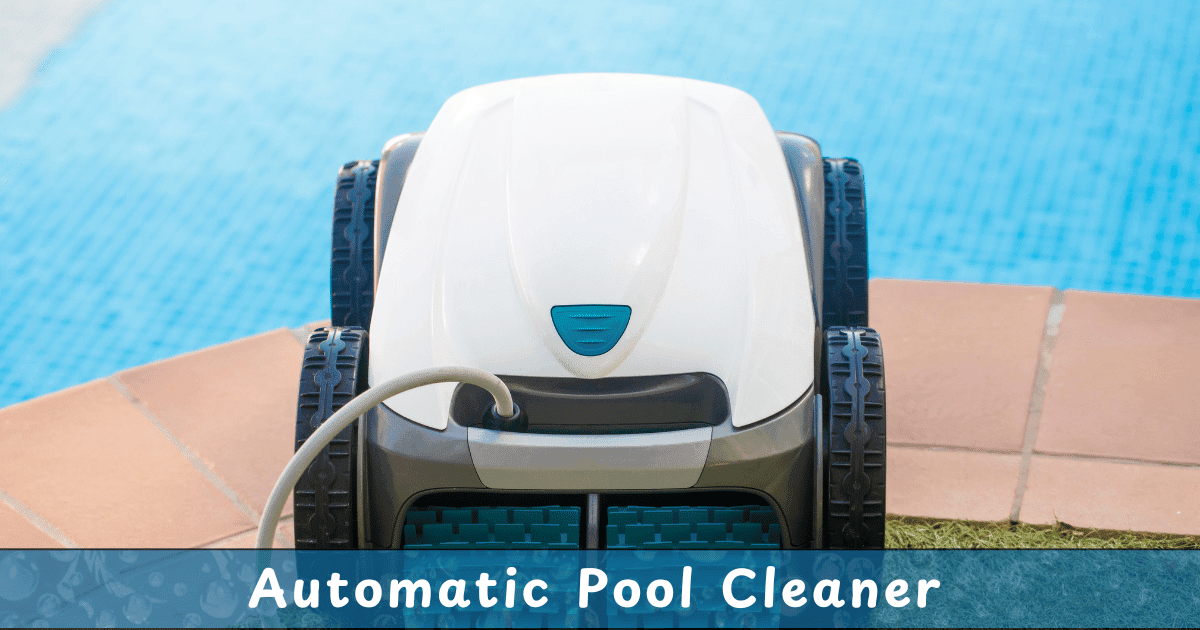
A clog in your plumbing can significantly slow the circulating process, making your pool suffer from loss of filtering power. To preempt possible damage, it’s crucial to regularly check the skimmer basket, strainer, and filter to remove smaller pieces of debris, like hair and leaves, before they get stuck and cause an expensive repair. A colander or bucket can help with this process. If there’s a larger block, it might be best to hire professionals like The Pool Butler to clean, maintain, and perform routine inspections. This not only keeps the water crystal clear but also saves you from expensive repairs down the line.
Your pump plays a huge role in keeping the circulation at the right level. A lower horsepower pump running longer can be more efficient than a higher one running faster for a short period. Using automatic timers can help maintain a steady flow rate and avoid energy waste. If your pool needs heating, an Energy-Saving ComforTemp Pool Heat Pump (95,000 BTU, 18,000 Gallons) is a breeze to install and can keep the temperature between 66 and 82 degrees. Just ask customer Steve, who had his setup complete in just a few days!
Lastly, don’t let buildup in the system go unchecked. Checking frequently and keeping the plumbing inspected on time will keep your pool running smoothly. If you notice a block or loss of power, it’s time to contact a cleaning service to get started before it turns into a larger repair bill. With the right maintenance, you’ll have an efficient, swimmable pool without spending extra money on your energy bill.
Frequently Asked Questions (FAQ’s)
1. What is a pool circulation system?
A pool circulation system is like the heart of your pool, actively keeping the water moving. It’s made up of several distinct parts that work together. The pump is the key part—it pulls in water, sends it through filters, and pushes it back into the pool. Without this system, water would become dirty fast. Every component plays a role, and it’s the only way to keep your pool clean and safe.
2. How do you fix poor circulation in pool?
A pump that runs at least 8 hours a day helps water move properly. If the system is weak, switch to a better pump suited for your pool size and volume. A clogged cartridge filter slows filtration, making it harder to clean water. Rinse or replace the filter often to keep things smooth.
3. When should you recirculate your pool?
If your pool looks greenish, it’s a sign of algae growing fast. The filter might not be working well, or clogs are stopping the water from filtering properly. If you can’t get clear water even after running the system, it’s time to recirculate. If you see pressure getting too high or sludge forming, turn off the filter and let the water move quickly. When I first faced this, I had to watch closely as I was sleeping to ensure the system didn’t get worse.
4. How do I get my pool water to circulate?
To keep your pool water clean, the pump should run for at least 8-10 hours a day. This helps remove debris and ensures proper circulation.
- Check the skimmer and baskets daily. Remove leaves and dirt so the pump does not clog.
- Adjust the return jets to angle them slightly toward the bottom. This helps stir the water and prevent dead spots.
- Make sure to perform routine checks on your system. Fix any issues as soon as possible.
- Do the following important tasks: clean filters, inspect equipment, and check water levels.
- Position the jets in a way that they do not all point in the same direction. This improves circulation as much as possible.
5. What is pool system?
A pool needs a continual flow of water to stay clean. This cycle helps in filtering out dirt and debris while keeping the bacteria away. The pump is the heart of these systems. It keeps the water moving, pulling it back in, cleaning it, and pushing it out again. The pumping process, combined with chemical treatment, ensures the pool remains relatively free from harmful particles.





